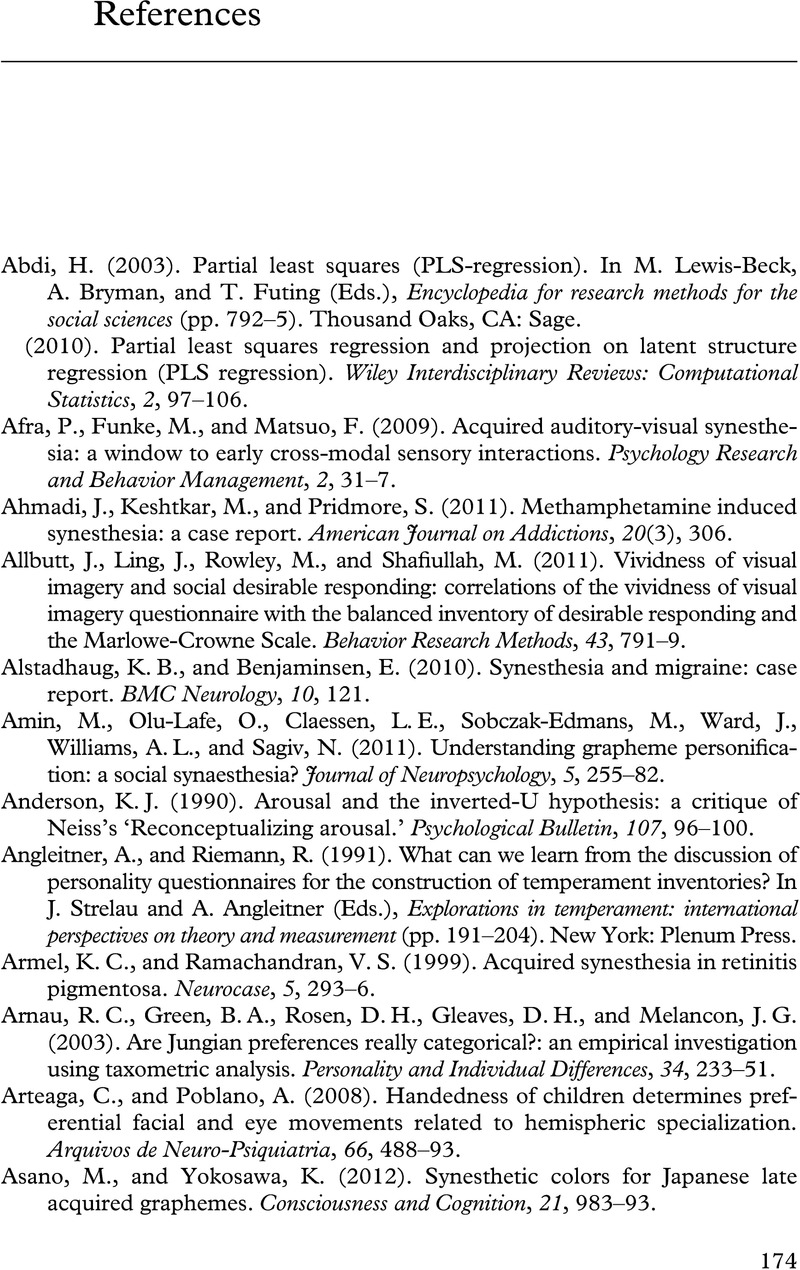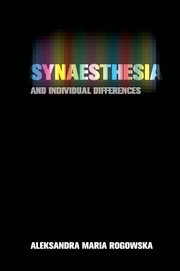Book contents
- Synaesthesia and Individual Differences
- Synaesthesia and Individual Differences
- Copyright page
- Contents
- Plates
- Figures
- Tables
- Introduction: is synaesthesia normal?
- 1 Exploring the structure and distribution of linguistic-colour associations in the concrete–abstract and strong–weak dimensions
- 2 Reconciling objective and subjective assessments of linguistic-colour associations: exploring the relationships between linguistic-colour synaesthesia and self-related sensing, body lateralization, and gender
- 3 Cognitive determinants of linguistic-colour associations
- 4 Relationships between linguistic-colour synaesthesia and individual differences in absorption, creative thinking, types of mind, and intelligence
- 5 Exploring the relationships between linguistic-colour associations and self-reported traits of personality and temperament
- General conclusions
- Book part
- References
- Index
- Plate Section (PDF Only)
- References
References
Published online by Cambridge University Press: 05 April 2015
- Synaesthesia and Individual Differences
- Synaesthesia and Individual Differences
- Copyright page
- Contents
- Plates
- Figures
- Tables
- Introduction: is synaesthesia normal?
- 1 Exploring the structure and distribution of linguistic-colour associations in the concrete–abstract and strong–weak dimensions
- 2 Reconciling objective and subjective assessments of linguistic-colour associations: exploring the relationships between linguistic-colour synaesthesia and self-related sensing, body lateralization, and gender
- 3 Cognitive determinants of linguistic-colour associations
- 4 Relationships between linguistic-colour synaesthesia and individual differences in absorption, creative thinking, types of mind, and intelligence
- 5 Exploring the relationships between linguistic-colour associations and self-reported traits of personality and temperament
- General conclusions
- Book part
- References
- Index
- Plate Section (PDF Only)
- References
Summary

- Type
- Chapter
- Information
- Synaesthesia and Individual Differences , pp. 174 - 197Publisher: Cambridge University PressPrint publication year: 2015



